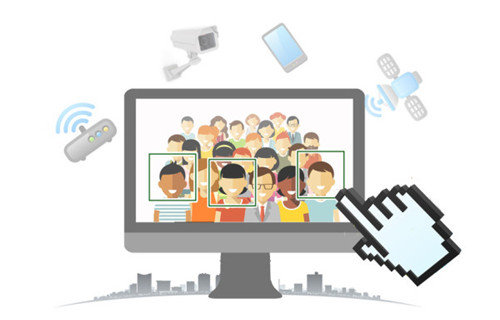
Facial recognition(识别) is becoming more and more common in China. It has been used at ATM machines and KFC restaurants. Now the technology has arrived in university classrooms to track students’ attendance.
Shen Hao, a professor in Communication University of China, is using facial recognition in his six courses to keep track of the attendance of more than 300 students and make sure no one is pretending to be anyone else.
Before every class, Shen starts the new attendance system installed on his computer. Students stand in front of the screen one by one to have their photos taken and matched with those in the school’s database. “The traditional way of tracking attendance is through a roll call. The new system saves time and reduces the workload of teachers,” said Shen.
Students have joked that facial recognition is strict as it doesn’t allow anybody to skip(缺席) classes. “But they support the technology to enter colleges,” said Cui Yuqin, a student of the university.
1.Where might we find the use of facial recognition?
A In university classrooms.
B In KFC restaurants.
C In the banks.
D All of the above.
解析:选D。D 细节理解题。根据第一段It has been used at ATM machines and KFC restaurants. Now the technology has arrived in university classrooms to track students’ attendance.可知人脸识别技术已经被用在自动取款机、肯德基和大学教室里,故选D。
2.Why did Shen use facial recognition in his class?
A To save time.
B To reduce workload.
C To check the attendance.
D To input students’ information.
解析:选C。C 细节理解题。根据第二段...to keep track of the attendance of more than 300 students and make sure no one is pretending to be anyone else.可知Shen利用人脸识别技术是为了记录学生的出勤状况,故选C。
3.How does the teacher check the attendance of students traditionally?
A By making a roll call.
B By matching students’ photos.
C By changing the students’ seats.
D By asking them questions.
解析:选A。A 细节理解题。根据第三段The traditional way of tracking attendance is through a roll call.可知传统的记录出勤的方式是点名,故选A。
4.What can we learn from the last paragraph?
A The students are against the use of facial recognition.
B The students think facial recognition is too strict.
C Facial recognition may help make attendances higher.
D Facial recognition is popular among students.
解析:选C。C 推理判断题。根据最后一段Students have joked that facial recognition is strict as it doesn’t allow anybody to skip classes.可知人脸识别技术运用于课堂点名之后,学生就不敢逃课了,由此可推测人脸识别技术的应用可能会提高学生的出勤率,故选C。
5.In which part of a magazine can you probably find this passage?
A Travel.
B Technology.
C Health.
D Sports.
解析:选B。B 文章出处题。文章讲的是一位大学教授将人脸识别技术应用于课堂点名的故事,属于技术应用,最有可能出现在“科技”版块,故选B。